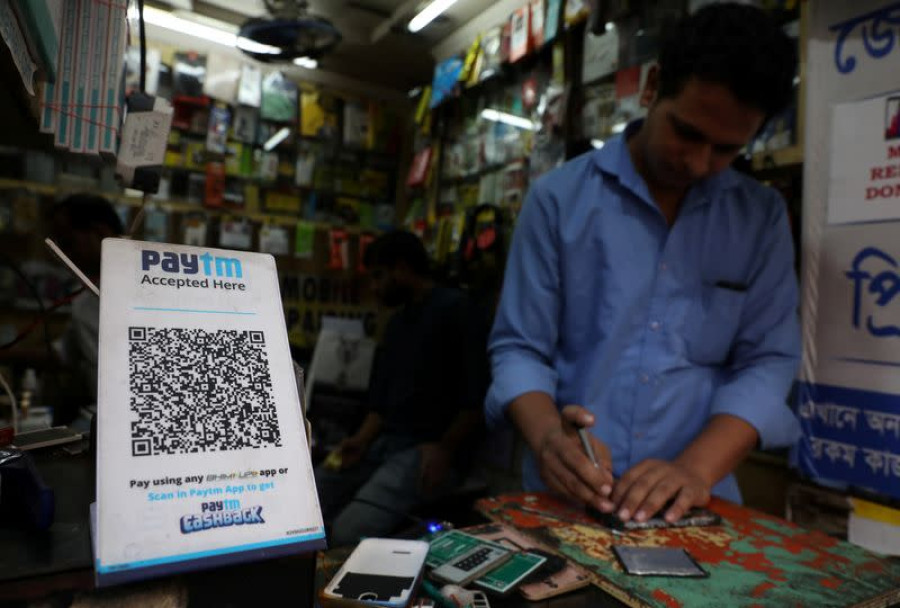Nepali officials attribute the delay to Indian banks, which have yet to update the mobile apps to incorporate Nepal’s payment features.

The much-awaited Nepal-India digital payment system has been postponed to December, as Indian banks delayed the technical work.
Nepal and India had planned to launch the system by November.
“We are technically ready. But the Indian banks are still in the process of completing the technical work on their part,” said Munni Rajbhandari, chief operating officer at the Nepal Clearing House, a payment system operator.
The Indian banks need to update their mobile apps to incorporate Nepal’s payment features, she said. “Once the update is completed, the project will be launched officially,” she said.
They have assured to complete the technical part by December, she added.
“In the first phase, we will begin with person-to-person (P2P) bank transfer through mobile phones between the two countries,” Rajbhandari said.
In June, Nepal and India agreed to begin the first phase of the cross-border payment system.
The P2P allows funds transfer through mobile banking.
According to the Nepal Clearing House, Nepali users can make a bank transfer to India with a unified payment interface (UPI) ID through mobile banking. Similarly, Indian users can make bank transfers to Nepal through a unique identifier—which can be a mobile number.
After the first phase, the second phase of cross-border digital payment, merchant payment and payment through quick response (QR) was originally planned to be implemented in December.
“As the first phase could not proceed, the second phase, too, has been delayed,” said Rajbhandari.
She, however, said that the technical work for the implementation of the second phase has started.
As per the plan, the second phase will be implemented by the end of the current fiscal year or mid-July.
In June, Neelesh Man Singh Pradhan, CEO of Nepal Clearing House, and Ritesh Shukla, CEO of National Payment Corporation of India International Payments, signed and exchanged a memorandum of understanding on behalf of their respective organisations for a cross-border digital payment system in New Delhi, India.
According to the Nepal Rastra Bank, electronic payment transactions in Nepal totalled Rs4.55 trillion during the mid-September to mid-October period. It was Rs4.60 trillion in the same period last fiscal year.
The number of transactions increased to 102.2 million during the review period from 70.37 million.
In January, the government opened the door to foreign investors to participate in Nepal's digital payment system under a newly amended policy.
The revised guidelines allow foreign direct investment in payment service provider firms and payment system operator firms up to 15 percent of the total capital.
The cross-border payment system is expected to be a boon for Indian visitors as they will be spared the hassle of carrying bundles of cash since Indian banknotes of denominations above Rs100 are banned in Nepal.
According to Indian media reports, the advantage of travelling to Nepal, before the banknotes were banned, was that one did not need to change money.
India is Nepal’s largest tourism source market.
In the first 11 months of this year (January-November), Nepal received more than 287,000 Indian tourists who came to Nepal via air transport, according to the statistics of the Nepal Tourism Board.
Last year, more than 200,000 tourists from India entered Nepal.
Travel trade entrepreneurs said that the payment system would also make it easier for Nepali students, businessmen and people going for treatment in India.
Nepal Clearing House, which launched the first phase of the National Payment Switch two years ago, is yet to introduce the second phase.
The second phase of work includes establishing a switch for the card payment settlement inside the country.
“The vendors have been selected and we have started working on the second phase,” said Rajbhandari. “We are preparing to implement the second phase by the end of the current fiscal year,” she said. “It could be a debit card, credit card or pre-paid card.”
Currently, domestic Visa and MasterCard transactions are switched through international payment gateways and the cardholders are charged in dollars per transaction.
But with the implementation of the national payment switch, the card payment switch will be made inside the country, reducing the charges and making transactions faster and more convenient, the company said.
According to Nepal Clearing House, with the card payment switch system built in the country, the Nepali banking and financial institutions will provide homegrown payment cards instead of Visa, Master and Union pay cards, which keeps the customer's data within the country and also helps in reducing the issuance and service charges of the payment cards.
The central bank handed the work of establishing and operating a national payment switch and operating a national payment card to the Nepal Clearing House.
The first phase of the national payment switch came into operation in November 2021 by establishing a retail payment switch with Nepal Clearing House beginning service after getting operational approval from the Nepal Rastra Bank.
The payment gateway brings together banks and digital payment vendors, allowing them to transfer money. As part of the first phase, 20 banks and financial institutions have been affiliated with the national payment switch.












